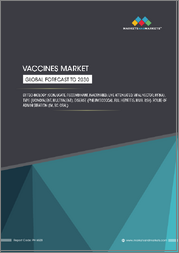
|
시장보고서
상품코드
1445550
베트남의 폐렴구균 백신 시장 평가 : 백신 유형, 백신 특성, 투여 경로, 연령대, 최종 사용자, 유통 채널, 지역별 기회 및 예측(2017-2031년)Vietnam Pneumococcal Vaccine Market Assessment, By Type of Vaccine, By Vaccine Property, By Route of Administration, By Age Group, By End-user, By Distribution Channel, By Region, By Opportunities and Forecast, 2017-2031F |
||||||
베트남의 폐렴구균 백신 시장 규모는 2023년 1억 1만 달러에서 2024년부터 2031년까지 예측 기간 동안 8.23%의 연평균 복합 성장률(CAGR)로 성장하여 2031년에는 1억 8,829만 달러에 달할 것으로 예상됩니다.
베트남의 폐렴구균 백신 시장은 백신 접종 프로그램에 대한 인식 증가, 폐렴구균 질환 발생률 증가, 특히 중증 감염에 취약한 노인 인구 증가 등 여러 요인으로 인해 강력한 성장세를 보이고 있습니다. 또한, 베트남 정부와 국제보건기구는 예방접종 프로그램을 강화하고 폐렴구균 질환의 부담을 줄이기 위한 이니셔티브를 시행하는 데 적극적인 역할을 하고 있으며, 이는 베트남의 폐렴구균 백신 시장 확대에 기여하고 있습니다.
베트남의 폐렴구균 백신 시장은 폐렴 발생률 증가로 인해 큰 영향을 받고 있습니다. 폐렴은 주로 어린이, 노인, 면역력이 약한 사람 등 감염에 취약한 사람들을 공격합니다. 폐렴 발병률 증가로 인해 현재 많은 인식 개선 캠페인이 활발히 진행되고 있습니다. 또한, 폐렴구균 질환에 대한 종합적인 치료법을 제공하기 위한 제약회사와 연구기관의 노력으로 베트남의 폐렴구균 백신 시장은 괄목할 만한 발전과 창의성을 보이고 있습니다. 기술 개발 및 의료 인프라에 대한 지출 증가로 인해 폐렴구균 백신 접종의 가용성과 접근성이 크게 향상되었습니다.
또한, 정부 프로그램 및 세계 보건 기관과의 파트너십은 베트남의 폐렴구균 백신 시장 성장에 큰 영향을 미치고 있습니다. 적극적인 예방접종 프로그램과 전술적 파트너십에 힘입어 백신 접종률이 증가하고 폐렴구균 감염에 대한 일반 대중의 인식이 높아지고 있습니다.
폐렴의 높은 유병률 :
베트남은 소아 폐렴 유병률 상위 15개국에 속합니다. 이 호흡기 질환은 베트남 어린이 병원 입원의 주요 원인이 되고 있습니다. 베트남에서는 영양 부족, 불충분한 모유 수유, 불충분한 예방 접종, 저체중 출생, 실내 오염, 과밀 생활 환경 등 다양한 위험 요인이 5세 미만 어린이의 중증 폐렴의 원인이 되고 있습니다.
기술의 발전이 시장을 주도한다:
기술 발전은 베트남의 폐렴구균 백신 시장의 급격한 성장의 원인으로 작용하고 있습니다. 폐렴구균 백신 접종은 초기에는 전세포 기반 기술을 사용하여 개발되었습니다. 이는 남아프리카공화국 광부들을 괴롭혔던 혈청형 1형 박테리아를 열로 죽인 것을 환자에게 접종하는 것이었습니다. 그러나 MacLeod 등의 연구에 따르면, 폐렴구균에 대한 면역을 통해 폐렴구균을 예방할 수 있다는 사실이 밝혀졌고, 그 결과 순수한 폐렴구균이 백신 제제에 사용되기 시작했습니다. 현재 사용되는 폐렴구균 예방접종은 인간 질병을 가장 빈번하게 유발하는 소수의 혈청형에서 유래한 순수 캡슐형 다당류다당체입니다. 현재 대부분의 허가 기관은 두 가지 유형의 백신, 즉 PPSV와 PCV를 포함한 두 가지 유형의 백신을 승인했습니다. 이러한 백신 제제는 베트남의 폐렴구균 백신 시장의 성장에 크게 기여하고 있습니다.
베트남의 폐렴구균 백신 시장을 조사했으며, 시장 정의와 개요, 시장 규모 추이 및 예측, 각종 부문별/지역별 상세 분석, 산업 구조, 시장 성장에 영향을 미치는 요인 분석, 사례 연구, 경쟁 구도, 주요 기업 프로파일 등의 정보를 전해드립니다.
목차
제1장 조사 방법
제2장 프로젝트의 범위와 정의
제3장 주요 요약
제4장 베트남의 폐렴구균 백신 시장 전망
- 시장 규모와 예측
- 백신 유형별
- 생약독화 백신
- 불활화 백신
- 아단위 백신
- 재조합 백신
- 백신 속성별
- 항원보강제
- 비항원보강제
- 투여 경로별
- 근육내
- 피하
- 피내
- 기타
- 연령별
- 유아
- 소아
- 성인
- 최종사용자별
- 병원
- 전문 클리닉
- 홈케어
- 기타
- 유통 채널별
- 병원
- 소매 약국
- 온라인 약국
- NGO
- 지역별
- 북부
- 남부
- 중부
- 기업별 시장 점유율
제5장 시장 매핑
- 백신 유형별
- 백신 속성별
- 투여 경로별
- 연령별
- 최종사용자별
- 유통 채널별
- 지역별
제6장 거시환경과 산업 구조
- 공급 수요 분석
- 수입 수출 분석
- 밸류체인 분석
- PESTEL 분석
- Porter의 Five Forces 분석
제7장 시장 역학
- 성장 촉진요인
- 성장 저해요인(과제 및 제약)
제8장 규제 구조와 혁신
- 임상시험
- 특허 상황
- 규제기관 승인
- 혁신/신기술
제9장 주요 기업 상황
- 시장 리더 주요 5개사의 경쟁 매트릭스
- 시장 리더 주요 5개사의 시장 매출 분석
- 인수합병(M&A) 및 합작투자(해당하는 경우)
- SWOT 분석(시장 기업 5개사)
- 특허 분석(해당하는 경우)
제10장 가격 분석
제11장 사례 연구
제12장 주요 기업 전망
- Pfizer Inc.
- Merck & Co., Inc.
- Walvax Biotechnology Co. Ltd.
- GlaxoSmithKline PLC.
- PnuVax Incorporated
- Novartis AG
- Serum Institute of Vietnam Pvt. Ltd.
- Panacea Biotec Limited
- Shenzhen Kangtai Biological Products Co., Ltd
- Sanofi Pasteur SA
제13장 전략적 제안
제14장 당사에 대해 & 면책사항
LSH 24.05.31Vietnam pneumococcal vaccine market is projected to witness a CAGR of 8.23% during the forecast period 2024-2031, growing from USD 100.01 million in 2023 to USD 188.29 million in 2031. The Vietnam pneumococcal vaccine market is experiencing robust growth driven by multiple factors, such as an increased awareness of vaccination programs, a rise in pneumococcal disease incidences, and a growing elderly population that is particularly susceptible to severe infections. Additionally, governments and international health organizations are playing an active role in enhancing immunization programs and implementing initiatives to alleviate the burden of pneumococcal diseases, further bolstering the expansion of the Vietnam pneumococcal vaccine market.
The Vietnam pneumococcal vaccine market is significantly impacted by the rising incidence of pneumonia. Pneumonia primarily strikes susceptible populations, including children, the elderly, and those with weakened immune systems. There are now more awareness-raising campaigns because of the rise in instances. Moreover, due to the efforts of pharmaceutical companies and research organizations to provide comprehensive treatments against pneumococcal diseases, the Vietnam pneumococcal vaccine market has seen outstanding progress and creativity. Pneumococcal vaccination availability and accessibility have significantly improved because of technological developments and increased spending on healthcare infrastructure.
Additionally, government programs and alliances with global health organizations have had a big impact on the growth of the Vietnam pneumococcal vaccine market. As proactive immunization programs and tactical partnerships have gained traction, vaccine coverage has grown, and public awareness of pneumococcal illnesses has grown.
High Prevalence of Pneumonia
Vietnam ranks among the top 15 countries with the highest prevalence of child pneumonia. This respiratory condition is a major cause of hospital admissions in pediatric hospitals in Vietnam. Various risk factors contribute to severe pneumonia among children under the age of 5 in Vietnam, including malnutrition, inadequate breastfeeding practices, insufficient vaccinations, low birth weight, indoor pollution, and overcrowded living conditions. The impact of pneumonia on young children in Vietnam is well-documented; however, little is known about the prevalence of severe pneumonia and its risk factors in this age group. Therefore, the primary driver of the Vietnam pneumococcal vaccine market's expansion is the country's high rate of pneumonia cases.
Technological Advancements are Driving the Market
Technological advancements are responsible for the upsurge in the growth of the Vietnam pneumococcal vaccine market. Pneumococcal vaccinations were first developed utilizing whole-cell-based techniques. These entailed immunizing patients with heat-killed serotype 1 bacteria, which had afflicted South African miners. Nonetheless, studies by MacLeod et al. demonstrated that the sickness was prevented by immunization with capsular polysaccharides. Consequently, pure capsular polysaccharides were used in vaccine formulations. It is noteworthy that every pneumococcal serotype has biochemical and antigenic differences. It would be unfeasible to attain universal capsule-based immunization coverage against the hundreds of serotypes that are now in use. Rather, pure capsular polysaccharides from a small number of serotypes that cause human illness most frequently make up the pneumococcal vaccinations that are currently in use. Presently, most licensing agencies approve two types of vaccines containing capsular polysaccharides: one composed of 23 purified capsules (PPSV) and the other composed of 7, 10, or 13 purified capsules conjugated to a protein carrier (PCV). These vaccine formulations are significantly responsible for the growth of the Vietnam pneumococcal vaccine market.
The Demand for Pneumococcal Conjugate Vaccine is on the Rise
The extraordinary impact of the pneumococcal conjugate vaccination (PCV) is substantially responsible for the expansion of the Vietnam pneumococcal vaccine market. PCV is specially designed to boost the immune system's reaction to certain polysaccharides found on the bacteria's surface. These polysaccharides bind to carrier proteins through a process known as conjugation, which greatly improves the immune system's capacity to recognize and successfully fight the infection. Because of its novel architecture, PCV not only boosts immunity but also offers broader protection against a larger variety of pneumococcal serotypes. This transformative vaccine has emerged as a vital tool in reducing the burden of pneumococcal-related diseases and has played a pivotal role in safeguarding public health on a global scale. In 2021, a trial of pneumococcal vaccine schedules for PCV10 and PCV 13 was conducted in Ho Chi Minh City, Vietnam. The trial was sponsored by Murdoch Children's Research Institute, an Australian pediatric medical research institute located in Melbourne, Victoria.
Intramuscular Vaccines are in Great Demand
High demand for intramuscular vaccines is driving the Vietnam pneumococcal vaccine market. Intramuscular vaccinations are preferred due to their ability to elicit a strong immune response. Strong and long-lasting immune system activation is made possible by the muscle tissue's abundant blood supply and greater concentration of antigen-presenting cells. This ultimately results in a notable upsurge in the generation of protective antibodies and cultivates an improved immune memory, both of which are essential for sustained protection against pneumococcal infections. On the other hand, intradermal delivery entails injecting the vaccine into the skin's underlying layer. Although there is evidence to support the usefulness of this method in eliciting a robust and long-lasting immune response for pneumococcal immunization, it is not as well-supported as other vaccines.
Future Market Scenario (2024-2031F)
Vietnam pneumococcal vaccine market will also be influenced by the active role of healthcare organizations in enhancing immunization programs.
The increasing awareness regarding pneumonia disease will propel the growth of the Vietnam pneumococcal vaccine market in the future.
Several products by different companies are in the pipeline which are likely to be launched in coming years. Thus, the availability of new vaccine formulations will drive the growth of the Vietnam pneumococcal vaccine market.
The shift in population demographics toward the geriatric population will cause an increase in the overall number of people with diseases, such as Pneumonia, thereby propelling the market expansion.
Key Players Landscape and Outlook
Over the years, the Vietnam pneumococcal vaccine market has undergone significant changes, spurred by the urgent mission to combat pneumococcal diseases and safeguard public health. Recognizing the gravity of this health challenge, a multitude of pharmaceutical companies, research institutions, and governmental bodies have come to appreciate the importance of working together and consolidating their efforts. In May 2023, Pfizer (Vietnam) Limited Company and Vietnam Vaccine Joint Stock Company entered a memorandum of understanding (MoU) with the shared objective of comprehensive cooperation to safeguard public health, proactively combat diseases, and align with global advancements in healthcare, thereby positively impacting the well-being of the Vietnamese population. The primary focus of this joint project is to improve the proficiency of personnel in the development, implementation, and management of real-world data on vaccination, commonly known as "Real-World Evidence," in Vietnam. By doing so, the collaboration aims to gain valuable insights into vaccination patterns among the Vietnamese people, ensuring the safety and efficacy of vaccination practices.
Table of Contents
1. Research Methodology
2. Project Scope & Definitions
3. Executive Summary
4. Vietnam Pneumococcal Vaccine Market Outlook, 2017-2031F
- 4.1. Market Size & Forecast
- 4.1.1. By Value
- 4.1.2. By Volume
- 4.2. By Type of Vaccine
- 4.2.1. Live Attenuated Vaccines
- 4.2.2. Inactivated Vaccines
- 4.2.3. Subunit Vaccines
- 4.2.3.1. Original Pathogen
- 4.2.3.2. Polysaccharide Vaccine
- 4.2.3.3. Conjugate Vaccine
- 4.2.3.4. Protein-based Vaccine
- 4.2.4. Recombinant Vaccine
- 4.3. By Vaccine Property
- 4.3.1. Adjuvanted
- 4.3.2. Non-adjuvanted
- 4.4. By Route of Administration
- 4.4.1. Intramuscular
- 4.4.2. Subcutaneous
- 4.4.3. Intradermal
- 4.4.4. Others
- 4.5. By Age group
- 4.5.1. Infants
- 4.5.2. Children
- 4.5.3. Adults
- 4.6. By End-user
- 4.6.1. Hospitals
- 4.6.2. Specialty Clinics
- 4.6.3. Homecare
- 4.6.4. Others
- 4.7. By Distribution Channel
- 4.7.1. Hospital
- 4.7.2. Retail Pharmacy
- 4.7.3. Online Pharmacy
- 4.7.4. Non-Governmental Organizations
- 4.8. By Region
- 4.8.1. Northern
- 4.8.2. Southern
- 4.8.3. Central
- 4.9. By Company Market Share (%), 2023
5. Market Mapping, 2023
- 5.1. By Type of Vaccine
- 5.2. By Vaccine Property
- 5.3. By Route of Administration
- 5.4. By Age group
- 5.5. By End-user
- 5.6. By Distribution channel
- 5.7. By Region
6. Macro Environment and Industry Structure
- 6.1. Supply Demand Analysis
- 6.2. Import Export Analysis
- 6.3. Value Chain Analysis
- 6.4. PESTEL Analysis
- 6.4.1. Political Factors
- 6.4.2. Economic System
- 6.4.3. Social Implications
- 6.4.4. Technological Advancements
- 6.4.5. Environmental Impacts
- 6.4.6. Legal Compliances and Regulatory Policies (Statutory Bodies Included)
- 6.5. Porter's Five Forces Analysis
- 6.5.1. Supplier Power
- 6.5.2. Buyer Power
- 6.5.3. Substitution Threat
- 6.5.4. Threat from New Entrant
- 6.5.5. Competitive Rivalry
7. Market Dynamics
- 7.1. Growth Drivers
- 7.2. Growth Inhibitors (Challenges and Restraints)
8. Regulatory Framework and Innovation
- 8.1. Clinical Trials
- 8.2. Patent Landscape
- 8.3. Regulatory Approvals
- 8.4. Innovations/Emerging Technologies
9. Key Players Landscape
- 9.1. Competition Matrix of Top Five Market Leaders
- 9.2. Market Revenue Analysis of Top Five Market Leaders (in %, 2023)
- 9.3. Mergers and Acquisitions/Joint Ventures (If Applicable)
- 9.4. SWOT Analysis (For Five Market Players)
- 9.5. Patent Analysis (If Applicable)
10. Pricing Analysis
11. Case Studies
12. Key Players Outlook
- 12.1. Pfizer Inc.
- 12.1.1. Company Details
- 12.1.2. Key Management Personnel
- 12.1.3. Products & Services
- 12.1.4. Financials (As reported)
- 12.1.5. Key Market Focus & Geographical Presence
- 12.1.6. Recent Developments
- 12.2. Merck & Co., Inc.
- 12.3. Walvax Biotechnology Co. Ltd.
- 12.4. GlaxoSmithKline PLC.
- 12.5. PnuVax Incorporated
- 12.6. Novartis AG
- 12.7. Serum Institute of Vietnam Pvt. Ltd.
- 12.8. Panacea Biotec Limited
- 12.9. Shenzhen Kangtai Biological Products Co., Ltd
- 12.10. Sanofi Pasteur SA
Companies mentioned above DO NOT hold any order as per market share and can be changed as per information available during research work



















